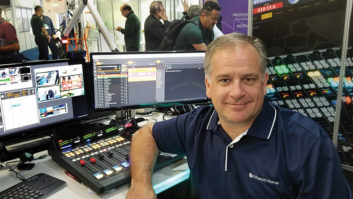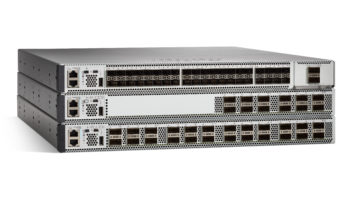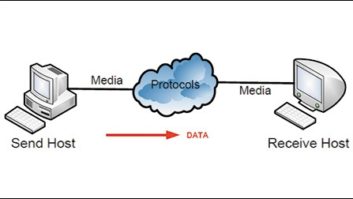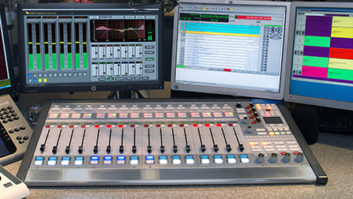Switches and Hubs
Aug 1, 2001 12:00 PM, By Kevin McNamara, CNE
Last month, I discussed Ethernet routers and some of the concepts behind routing. This month, we will look at a slightly different piece of network hardware, the Ethernet switch. I use the term slightly because, operationally, the current generations of Ethernet switches have a great deal in common with routers.
LAN hardware and the OSI model
In order to fully understand how switches work, it is useful to know where the basic network components hubs, bridges and routers fit with the Open Standards Interconnect (OSI) model. The OSI not only provides a method for PCs to seamlessly communicate with each other, but it also helps us recognize the role that various network devices play in transferring data. You will recall that the OSI model comprises seven layers; each layer performs specific functions and subsequently passes data to the next layer up/down the line. It is reasonable to assume devices that use a higher layer are more intelligent and require more processing capabilities. Most network hardware is designed to operate at a specific layer, or, in some cases, more than one. For example, network interface cards (NIC), or something as simple as the network cabling, operate at Layer 1, the physical layer, which deals with the communications hardware. Active hubs also work at Layer 1, since their main function is to regenerate signals carried over the cabling. This regeneration can also make it possible to operate different connection speeds, i.e. 10Mb/s and 100Mb/s within the same network segment.
The OSI model and the layers at which some devices operate.

Layer 2 of the OSI model, the Data Link Layer, assures that data moves information reliably between two points. You see layer 2 activity on the flashing lamps typically found on most network devices. Bridges are an example of a network device operating at Layer 2. The primary function of the bridge is to segment traffic between two different networks by filtering data based on the Media Access Control (MAC) protocol ID number. Bridges can also have more sophisticated features, such as the ability to talk with other bridges and dynamically route traffic for the most efficient traffic flow.
Layer 3, the Network Layer, provides the ability to route data based on Internet Protocol (IP) addressing. Router operations (discussed in last month’s column) are based primarily on Layer 3; however, routers can also use Layers 1 and 2, depending on the specific features. Next generation routers will use Layers 4 and higher; however, the power and complexity required to implement these devices will be sizable.
Hubs and switches
Hubs form the central terminus in a network based on a Star topology. The earliest hubs were called passive hubs. They were typically used with coaxial media and were nothing more than a constant impedance resistive splitter. However, as LANs moved toward using telephone type wiring and connectors, losses through the cabling were an issue. Hubs were developed that electronically regenerated received data, thus enabling longer lengths of cabling. These active hubs became the standard device used in an Ethernet network.
Switches look and feel like a basic network hub, but that’s where the similarity ends. In terms of functionality, the switch resembles a high performance bridge. Like the bridge, switches operate at Layers 1 and 2, permit the isolation of LAN traffic and can establish full-duplex connections with other switches. Perhaps the easiest way to visualize how a switch differs from a hub is that the hub simply receives data and regenerates that data to all ports simultaneously, while a switch sets up each port as an individual path for data. For example, an eight-port switch will permit up to four separate data paths to be established. Switches are constructed using a high-performance backplane designed to support throughputs in excess of 100Mb/s or higher.
In a broadcast environment, where the facility supports a mixed variety of data traffic such as streaming audio and simple file transfers, network performance would materially improve simply by replacing a hub with a switch. Switches, however, do not provide any meaningful level of security as do devices operating at higher layers, such as routers.
Varieties of switches
Switches are intelligent devices that read the incoming packets and make the decision where to send the data. The current generation of switch is based on either of two technologies store-and-forward or cut-through.
Switches using the store-and-forward method require that an entire packet be received before it is sent to the appropriate port. This permits very efficient translation between connections of different speeds. Because data is stored before being sent, there is some delay, or latency, developed. This latency is typically not noticeable in most 10 or 100Mb/s LANs with moderate data traffic.
If latency is an issue, than a switch using the cut-through method would be advised. Cut-through switches pass packets through immediately after reading the destination information. In many cases, data has been passed before the packet has been fully received. Cut-through switches are pricier than store-and-forward, but are recommended for larger high-performance LANs or LAN backbones above 100Mb/s.
Most common switches at the local computer emporium are of the store-and-forward variety. You’ll probably find that it is harder to locate basic hubs anymore, as the price of consumer level switches have fallen below the $100 price-point.
Because switches operate at layer 2, they permit the passing of traffic from a variety of network protocols, such as IP, IPX, etc. This is particularly important if you mix network operating systems, such as Netware (4.x and lower) and Windows. Some switches permit the ability to filter data based on criteria such as protocol.
Migrating to switched a LAN environment provides a significant increase in network performance for a relatively low investment. Switches can also provide effective load balancing on LANs with mixed speed connections. Data collisions that would bring Ethernet networks to a standstill can be minimized or eliminated through the use of switches.
Kevin McNamara, BE Radio’s consultant on computer technology, is president of Applied Wireless Inc., New Market, MD.
All of the Networks articles have been approved by the SBE Certification Committee as suitable study material that may assist your preparation for the SBE Certified Broadcast Networking Technologist exam. Contact the SBE at (317) 846-9000 or go towww.sbe.orgfor more information on SBE Certification.











